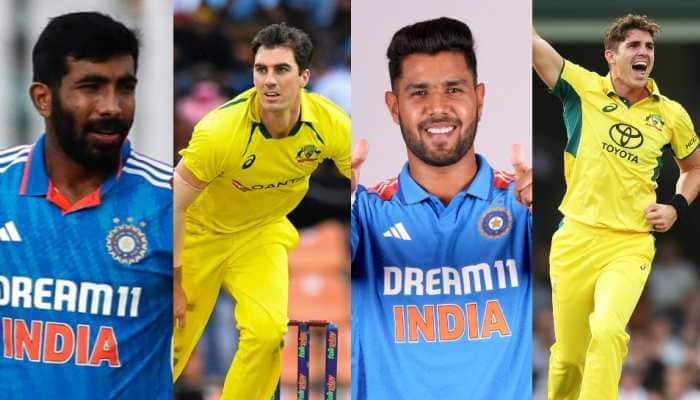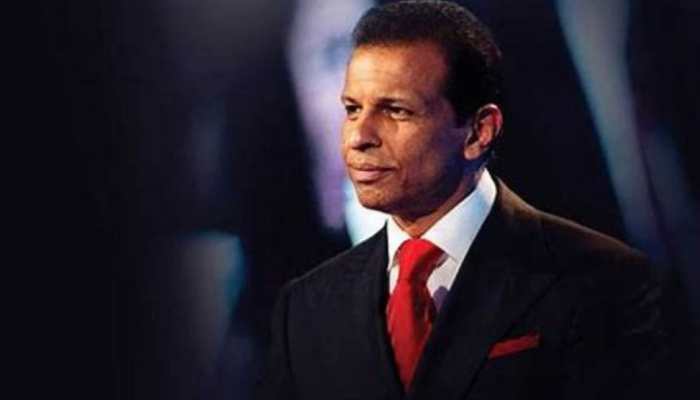What Is Akhilesh Yadav's Brahmin Card? A Closer Look at the Ritwik Pandey Case
Political analysts believe that the selection of Mata Prasad Pandey as Leader of Opposition is more about balancing party dynamics and the assembly than Akhilesh's social strategy.
Trending Photos
)
In a historic move, the Samajwadi Party (SP) has appointed a Brahmin leader as the Leader of Opposition in the Uttar Pradesh Assembly for the first time in its four-decade history. This decision comes at a time when Akhilesh Yadav's PDA (Backward-Dalit-Minority) formula is politically successful. Within the SP, this decision has received mixed reactions, and both the BJP and BSP have raised questions about it. Amid issues like caste census and saving the Constitution, Akhilesh's decision has sparked a debate on whether political efforts to mobilize Brahmin votes will intensify.
Political analysts believe that the selection of Mata Prasad Pandey as Leader of Opposition is more about balancing party dynamics and the assembly than Akhilesh's social strategy. Particularly with senior leaders like Shivpal Yadav present, selecting an appropriate face outside the Saifai family was not easy.
The Search for ‘Prasad’ through Mata Prasad
The first question about Mata Prasad Pandey's appointment was raised by BJP's senior leader and Deputy CM Keshav Prasad Maurya. He highlighted the neglect of the PDA and accused the SP of ignoring backward communities. After the BJP's defeat in Kurmi-Maurya dominant seats in the Lok Sabha elections, Maurya and other backward leaders are under scrutiny. By raising the issue of representation, Maurya is attempting to recover lost votes. However, BJP's Brahmin leaders have a different tone.
Former BJP MLA from Manikpur, Anand Shukla, congratulated Mata Prasad on ‘X’ (formerly Twitter), stating that everyone needs the 15% Brahmin votes. Meanwhile, after BSP chief Mayawati's reaction, BSP's sidelined national general secretary Satish Chandra Mishra accused the SP government of neglecting upper castes and backward classes and reminded of the atrocities on the Brahmin community. These comments indicate that efforts to gain political favor via Mata Prasad are also intensifying among SP's opposition.
The Controversy in Banthra Village, Lucknow
Last Saturday, in Banthra village of Lucknow, a dispute over electricity led to the lynching of a youth named Ritwik Pandey. The victim's family alleges that a week after the murder, the police have not arrested any accused. This incident has also taken a political turn. SP chief Akhilesh Yadav, mentioning the incident, criticized the BJP government and a local MLA, intensifying the Brahmin versus Thakur narrative. A delegation from SP, including Brahmin leaders, visited Ritwik's home.
Incident Details
On Saturday night in Banthra village, a clash over electricity supply erupted. Around 10 PM, the power supply started, but Ritwik Pandey's area remained without electricity. Ritwik and some others went out to the scene, where villagers Rishu Singh and others also arrived. The dispute escalated into a brawl. After the matter cooled down, Ritwik returned home. Later, Rishu and his family attacked Ritwik's house, leading to Ritwik's death and injuries to his father and brother. The victim's family claims that the police have taken no action.
Political Importance of Brahmins in Uttar Pradesh
Political parties and Brahmin organizations in Uttar Pradesh claim the Brahmin population is around 10-12%. Before the rise of Mandal politics in the 90s, Brahmins, Dalits, and Muslims formed a coalition that kept Congress in power. All Brahmin Chief Ministers of UP were during Congress rule. During Mandal and Kamandal politics, Brahmins supported the BJP. In 2007, Mayawati's Brahmin-Dalit social engineering formula brought BSP to power with the slogan, "Brahmin Shankh Bajayega, Haathi Badhta Jayega."
CSDS data shows that in 2007, despite the highest Brahmin vote going to BJP, BSP received 11% more Brahmin votes than in 2002. BSP had 40 Brahmin MLAs, while SP had 21 Brahmins winning in 2012. Since the 2014 Lok Sabha elections, Brahmin votes have consolidated with BJP. In 2019, 80% Brahmin votes went to BJP, and the trend continued in 2022, with 46 out of 52 Brahmin MLAs belonging to NDA.
Analysts say that Brahmins influence not only vote calculations but also perception chemistry. Akhilesh has successfully convinced his core voters that defeating BJP requires broad alliances, applicable to the 2027 strategy. BSP is worried as its Dalit vote base is shifting, and SP is increasing its share among upper castes. In this scenario, the sidelined BSP seems to suffer the most. After the Lok Sabha election results, BJP, facing internal strife, is concerned about retaining its gains from the past decade, which appeared to be slipping in recent elections. Therefore, SP's move to attract its core vote base has intensified BJP's concerns.
Brahmin Representation in the Assembly
In 1980, there were 87 Brahmin MLAs.
In 2002, there were 41 Brahmin MLAs.
In 2007, there were 56 Brahmin MLAs.
In 2012, there were 47 Brahmin MLAs.
In 2017, there were 58 Brahmin MLAs.
In 2022, 52 Brahmin MLAs were elected.
Stay informed on all the latest news, real-time breaking news updates, and follow all the important headlines in india news and world News on Zee News.
Live Tv







)
)
)
)
)
)
)
)
)
)
